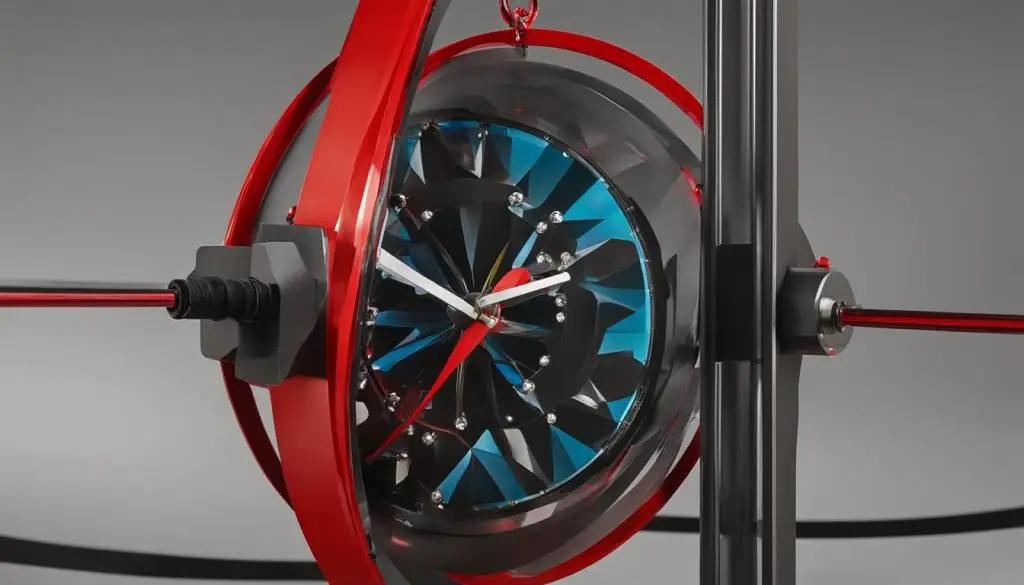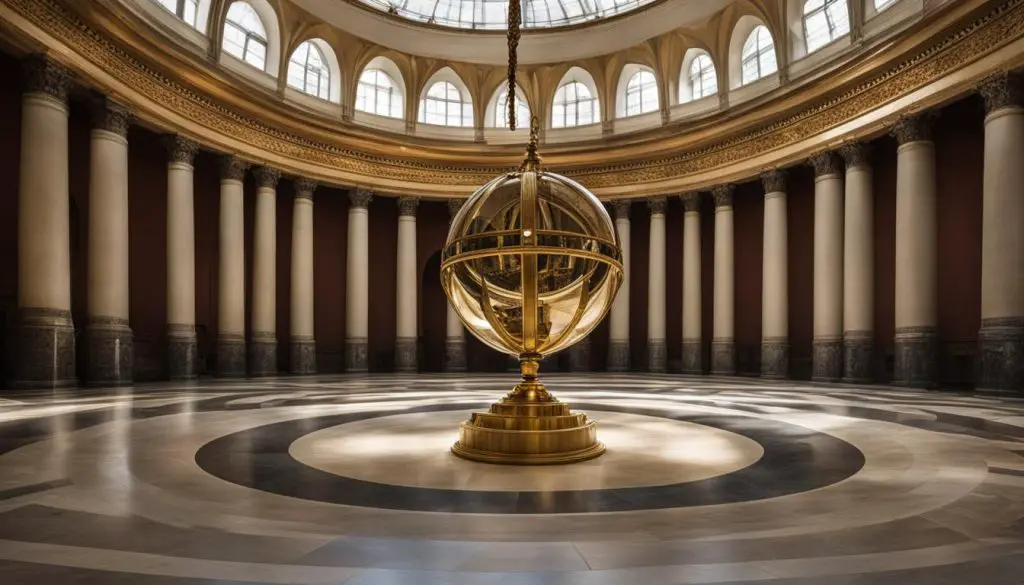Have you ever wondered about the mystical power of a pendulum and how it can help you connect with your inner self? Look no further, because I am here to share with you some fascinating facts about how to use a pendulum. This ancient tool has been used for centuries to tap into our intuition, harness energy, and gain insights into our subconscious. Let’s embark on this journey of self-discovery together!
Key Takeaways:
- Using a pendulum can help you tap into your intuition and access deeper insights.
- Pendulums can be used to gain clarity, make decisions, and find answers to important questions.
- When using a pendulum, it’s important to create a sacred space and be open to receiving guidance.
- Regular practice with a pendulum can enhance your spiritual connection and increase your self-awareness.
- Remember to trust your instincts and follow your own inner wisdom when working with a pendulum.
The Foucault Pendulum Showcases Earth’s Rotation
The Foucault Pendulum is a mesmerizing scientific instrument that provides visual evidence for the rotation of the Earth. As it swings back and forth, the pendulum appears to rotate in a clockwise or counterclockwise direction, depending on the latitude of the location. This captivating motion solidifies the concept of a rotating Earth and supports the heliocentric model of the solar system.
The Foucault Pendulum’s swinging trajectory is influenced by the Coriolis effect, a phenomenon caused by Earth’s rotation. This effect gradually changes the direction in which the pendulum swings, creating the illusion of rotation. The rotation rate of the pendulum varies with the latitude, with faster rotation observed closer to the equator and slower rotation near the poles.
The Foucault Pendulum showcases the dynamic nature of our planet, reminding us of the constant motion and rotation that shape our lives and the world we inhabit.
The Foucault Pendulum’s ability to showcase Earth’s rotation has not only fascinated audiences but also inspired scientific discoveries. It played a significant role in Albert Einstein’s development of the theory of relativity, deepening our understanding of gravity, mass, and spacetime. This remarkable instrument continues to contribute to our knowledge of physics and astronomy, captivating visitors in science museums worldwide.

The History and Invention of the Foucault Pendulum
Let us delve into the fascinating history behind the invention of the Foucault Pendulum, a scientific marvel that continues to captivate audiences worldwide. The credit for this groundbreaking invention goes to the brilliant French physicist, Léon Foucault. In the year 1851, Foucault first unveiled his creation at the iconic Panthéon in Paris, where it quickly became a symbol of scientific innovation.
The Foucault Pendulum’s debut at the Panthéon marked the beginning of a remarkable journey that would inspire generations to come. Its mesmerizing motion and ability to showcase the rotation of the Earth fascinated spectators and sparked a newfound interest in understanding our planet and the laws of physics that govern it. Since then, the Foucault Pendulum has become an integral part of science museums and institutions around the world, captivating visitors with its grandeur and scientific significance.

Today, the Foucault Pendulum stands as a testament to the ingenuity of Léon Foucault and his contributions to the field of physics. It not only showcases the Earth’s rotation but also serves as a symbol of humanity’s relentless pursuit of knowledge and understanding. As we witness the pendulum’s graceful swing, we are reminded of the rich history behind this remarkable invention and the countless minds it has inspired over the years.
The Phenomenon of Earth’s Rotation and the Pendulum’s Trajectory
The rotation of the Earth plays a fascinating role in the trajectory of a Foucault Pendulum. As the pendulum swings back and forth, it experiences an apparent change in its swinging direction due to Earth’s rotation. This phenomenon, known as the Coriolis effect, gradually causes the pendulum to rotate over time.
The Coriolis effect is a result of the Earth’s rotation, which creates a force that acts perpendicular to the pendulum’s motion. As a result, the pendulum’s trajectory shifts slightly with each swing. The rotation rate of the pendulum is influenced by the latitude of the location, with faster rotation closer to the equator and slower rotation near the poles.
The Coriolis Effect and the Pendulum’s Path
When observing a Foucault Pendulum, one can witness the mesmerizing rotation of the pendulum’s plane of swing. Over time, the path of the pendulum traces out a circular pattern, rotating clockwise or counterclockwise depending on the hemisphere it is located in. This gradual rotation is a direct result of the Coriolis effect and serves as a visual proof of Earth’s rotation.
The interaction between Earth’s rotation and the Foucault Pendulum’s trajectory has been a subject of scientific fascination for centuries. By studying this phenomenon, researchers have gained valuable insights into the dynamics of rotating systems and deepened our understanding of the physical laws that govern our planet.
| Latitude | Rotation Rate |
|---|---|
| Equator | Fastest rotation |
| Tropical regions | Slower rotation |
| Polar regions | Slowest rotation |
The Factors Affecting the Rotation Period of the Pendulum
When it comes to the rotation period of a Foucault Pendulum, several factors come into play. The length of the pendulum is a key factor in determining the rotation rate. A longer pendulum will have a slower rotation period, while a shorter pendulum will rotate more quickly. This relationship between pendulum length and rotation period provides a fascinating insight into the physics behind the pendulum’s motion.
Air resistance also plays a role in the rotation period of the pendulum. The motion of the pendulum is gradually dampened by air resistance, which means that periodic pushes are required to maintain its motion. This resistance to motion is an important consideration when it comes to the design and operation of Foucault Pendulums. Overcoming air resistance allows the pendulum to continue its mesmerizing rotation and showcase the Earth’s rotation.
The Influence of Pendulum Length on Rotation Period
To further understand the relationship between pendulum length and rotation period, let’s take a look at the following table:
| Pendulum Length (meters) | Rotation Period (hours) |
|---|---|
| 10 | 24 |
| 15 | 36 |
| 20 | 48 |
As the table demonstrates, as the length of the pendulum increases, the rotation period also increases. This correlation highlights the importance of pendulum length in determining the rotational behavior of the Foucault Pendulum. These findings not only deepen our understanding of the pendulum’s dynamics but also showcase the intricate relationship between simple physical systems and the natural world.

By considering both pendulum length and air resistance, we gain valuable insights into the rotation period of the Foucault Pendulum. From the elegant motion of the pendulum to the complex interplay of forces at work, the factors influencing its rotation period further underscore the beauty and wonder of this scientific instrument.
The Widespread Presence of Foucault Pendulums Around the World
The Foucault Pendulum has captivated the imaginations of people around the world, leading to its widespread presence in various institutions and museums. These mesmerizing pendulums provide visitors with a unique opportunity to witness the rotation of the Earth and deepen their understanding of the laws of physics.
One of the most famous Foucault Pendulums can be found at the Panthéon in Paris, where it was originally showcased by its inventor, Léon Foucault, in 1851. This iconic pendulum continues to amaze visitors with its graceful swing and serves as a symbol of scientific innovation.
However, the presence of Foucault Pendulums is not limited to Paris. Institutions and museums around the world have recognized the educational and inspirational value of these pendulums, leading to their installation in various locations. From London’s Science Museum to the Griffith Observatory in Los Angeles, these pendulums can be found captivating audiences everywhere.
| Location | Description |
|---|---|
| Panthéon (Paris, France) | Original Foucault Pendulum invented by Léon Foucault in 1851. |
| Science Museum (London, UK) | A popular museum showcasing a Foucault Pendulum among its vast collection of scientific exhibits. |
| Griffith Observatory (Los Angeles, USA) | Home to a Foucault Pendulum that mesmerizes visitors with its elegant swing and unique demonstration of Earth’s rotation. |
| Deutsches Museum (Munich, Germany) | One of the world’s largest science and technology museums, featuring a Foucault Pendulum that showcases the wonders of physics. |
These Foucault Pendulums serve as powerful educational tools, inspiring curiosity and encouraging a deeper exploration of the natural world. By witnessing the pendulum’s rotation, visitors can connect with the awe-inspiring forces that shape our planet and gain a greater appreciation for the interconnectedness of the universe.

References:
“Foucault Pendulum.” Pantheon Paris. Accessed November 20, 2021. https://pantheon.paris/en/activity/foucault-pendulum
“Pendulum.” Science Museum, London. Accessed November 20, 2021. https://www.sciencemuseum.org.uk/objects-and-stories/pendulum
“Foucault Pendulum.” Griffith Observatory. Accessed November 20, 2021. http://griffithobservatory.org/exhibits/foucault-pendulum.html
“Deutsches Museum.” Deutsches Museum. Accessed November 20, 2021. https://www.deutsches-museum.de/en/exhibitions/natural-science/
The Influence of the Foucault Pendulum on Scientific Discoveries
The Foucault Pendulum has had a profound influence on scientific discoveries, shaping our understanding of the universe and the laws that govern it. One of its most notable impacts is its inspiration of Albert Einstein and his groundbreaking theory of relativity. As I stand in awe of this mesmerizing pendulum, I can’t help but appreciate the immense contribution it has made to our knowledge of gravity, mass, and the fabric of spacetime.
Inspiring Einstein’s Theory of Relativity
The Foucault Pendulum’s elegant motion, so delicately revealing the rotation of the Earth, captivated the scientific community, including the brilliant mind of Albert Einstein. The pendulum’s ability to showcase Earth’s rotation provided valuable insight into the nature of our universe. It ignited Einstein’s imagination, leading him to formulate his revolutionary theory of relativity, which forever transformed our understanding of space, time, and the interplay between mass and gravity.
Contributing to Physics and Astronomy
By demonstrably illustrating Earth’s rotation, the Foucault Pendulum has played a vital role in advancing our knowledge of physics and astronomy. It has deepened our comprehension of the Coriolis effect, the phenomenon that causes the pendulum’s apparent change in direction. Through rigorous observation and study of the pendulum’s trajectory, scientists have gained valuable insights into the behavior of rotating systems, furthering our understanding of celestial mechanics and the fundamental laws of nature.
A Symbol of Scientific Exploration
Furthermore, the Foucault Pendulum serves as a powerful symbol of scientific exploration and innovation. Its presence in museums and institutions worldwide continues to inspire generations of curious minds. As I watch the graceful swing of the pendulum, I am reminded of our collective pursuit of knowledge and the endless possibilities that lie within the mysteries of the universe. The legacy of the Foucault Pendulum is a testament to the curiosity and ingenuity of humanity, propelling us ever forward in our quest for enlightenment.
FAQ
How does a Foucault Pendulum demonstrate the rotation of the Earth?
The Foucault Pendulum appears to rotate in a clockwise or counterclockwise direction as it swings back and forth, providing visual evidence of a rotating Earth.
Who invented the Foucault Pendulum?
The Foucault Pendulum was invented by Léon Foucault in 1851.
Where was the first Foucault Pendulum showcased?
The first Foucault Pendulum was showcased at the Panthéon in Paris.
What causes the rotation of the Foucault Pendulum?
The rotation of the Foucault Pendulum is influenced by the Coriolis effect, which is a result of Earth’s rotation.
How does the rotation rate of the Foucault Pendulum vary?
The rotation rate of the Foucault Pendulum depends on the latitude of the location, with faster rotation closer to the equator and slower rotation near the poles.
What factors affect the rotation period of the pendulum?
The rotation period of the pendulum is influenced by the length of the pendulum, with longer pendulums having a slower rotation rate. Air resistance also plays a role in the motion of the pendulum.
Where can I find Foucault Pendulums around the world?
Foucault Pendulums can be found in many institutions and museums worldwide.
How has the Foucault Pendulum influenced scientific discoveries?
The motion of the Foucault Pendulum inspired Albert Einstein and influenced his theory of relativity, contributing to our understanding of gravity, mass, and spacetime.
